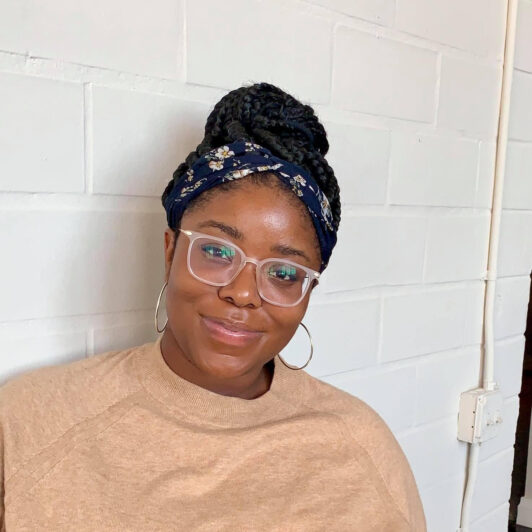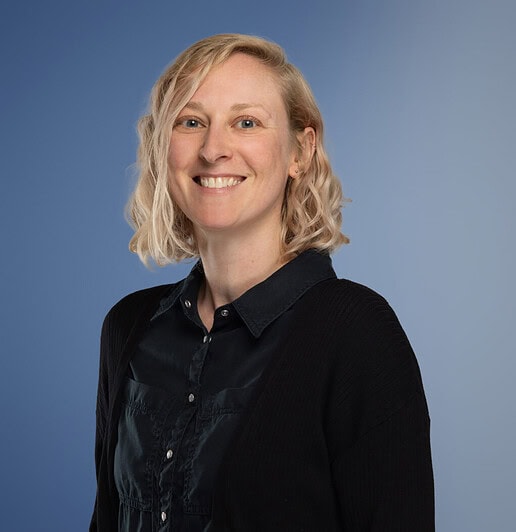Making child development research inclusive
How can research procedures, equipment, and environments be made more comfortable and welcoming?

Eryn Adams and her research team use a safe, non-invasive method called electroencephalography (EEG) to measure children’s brainwaves. They encountered some challenges and opportunities when using EEG with diverse study samples. Eryn tells Annie Brookman-Byrne about how they made their research more inclusive for Latinx and Black families.
Annie Brookman-Byrne: What inspired your research team to investigate how EEG can be made more inclusive?
Eryn Adams: We were working with families in the Baby’s First Years study, an intervention assessing how monthly cash supplements affect children and mothers living below the poverty line. The study is comprised primarily of Latinx and Black families. One part of the study required collecting data on children’s brainwaves using EEG, which involved placing a cap of electrodes on the child’s head.
We found that some traditional EEG lab practices and equipment are not designed to accommodate coarser or more voluminous hair or to respect a wide range of hairstyles. Most of the researchers involved in this study share racial or ethnic identity with the families we were working with, and understood first-hand how uncomfortable it can be when others don’t know how to discuss or work with your hair type.
An unintended consequence is that already marginalized families may not be included in critically important research. Yet research should represent the wider population, so that findings generalize to everyone.
“Research should represent the wider population, so that findings generalize to everyone.”
ABB: How did you adapt the procedures and equipment for your families?
EA: With much discussion, trial and error, and feedback from participating parents, we continued to improve the way we discussed lab visits with families and how we worked with various hair types. We want to share what we have learned from working with Black and Latinx families so that other researchers are well equipped to include children from all racial and ethnic backgrounds in their studies. We also want participant families to feel appreciated and cared for after laboratory visits.
There are cultural considerations that researchers should be aware of to avoid creating uncomfortable environments for families. For example, they should not ask a participant to remove or change a long-term hairstyle. We have created guides on how to discuss the EEG process with families so that they are well informed. We provide specific examples of hairstyles commonly worn by Black and Latinx children and offer advice on how to achieve optimal data collection during EEG recordings. We also discuss equipment considerations for working with coarse or voluminous hair.
We hope that our insights will be useful for researchers who use EEG with children, and help to improve research that includes minoritized families. Well-informed researchers are better able to create laboratory environments that leave families feeling valued, while also collecting high-quality data that can advance our understanding of brain development. The more inclusive our research, the more impactful results will be for science and policy.
“Well-informed researchers are better able to create laboratory environments that leave families feeling valued.”
ABB: What was it like working with families on this issue?
EA: We were inspired by the willingness of parents in our studies to help broaden our understanding of how to work with their children’s hair. Although most of our researchers are Latinx or Black, we found ourselves still learning about children’s hair practices. We will continue to listen carefully to the participants in our research studies, who bring rich experience and knowledge to each laboratory visit and inspire us to continue to improve our studies.
Footnotes
Eryn Adams earned her PhD at the University of Missouri in psychology with a focus on cognition and neuroscience. She worked as a postdoctoral scientist and site coordinator for the Louisiana site of the Baby’s First Years study. The study is an intervention assessing how monthly cash supplements affect children and mothers living below the federal poverty line in the United States. She is now a Health Science Policy Analyst with the National Institutes of Health.
Eryn on LinkedIn
Eryn Adams contributed to a special collection on understanding and addressing inequality in education in the journal npj Science of Learning. This interview is part of a series dedicated to sharing practical takeaways and personal insights from authors.
The interview has been edited for clarity.



Dr. Adams, I commend and appreciate your inclusive view and scope of research. Unfortunately, this is novel approach. May your research be blessed ad you address education and resource needs of all children.